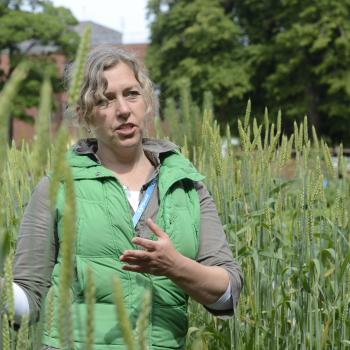
Recovery through Green Infrastructure
Improving green infrastructure to support recovery and improve health and wellbeing

Grantee: Cyrenians
What we set out to achieve
The idea of engaging with a wider range of people and improving green infrastructure to support recovery and improve health and wellbeing came from extensive consultation and engagement with a range of NHS Lothian patients, staff and visitors at Royal Edinburgh, Astley Ainslie and Midlothian Community Hospitals, as well as with volunteers and visitors to our community gardens and local community organisations. Project participants are excited at extending the number and type of people taking part in new activities and new locations, resulting in improved green infrastructure.
How the community has helped us develop our ideas
We have engaged and consulted with people from the hospital community, local community, our own volunteers and participants, local community organisations, and communities of interest to develop this project. As part of engagement with the hospital community, we ran our Recovery Pathways pilot project which was delivered at the Royal Edinburgh Hospital in 2016-17, where we delivered workshops on 22 wards covering most hospital services.
We have also engaged with a number of community organisations to develop activity plans and construct some green infrastructure, including Edinburgh and Lothians Greenspace Trust, The Conservation Volunteers, the Orchard Centre, Bonnyrigg (a community mental health project managed by Health in Mind), The Welcoming Project (supporting refugees and migrants in Edinburgh), Redhall Walled Garden (a community mental health project managed by Scottish Association for Mental Health) the Broomhouse Centre, and the Soil to Slice Citizen science project.
How our project fits into the bigger picture
Recovery through Green Infrastructure will contribute to NHS Lothian’s A Sense of Belonging, the national Health Promoting Hospital agenda, Our Natural Health Service, Green Exercise Partnership goals as well as biodiversity and health, environment, climate change, community empowerment and equalities policies.
Where we would like our project to lead us
We will reach a wider audience from the hospital and local community organisations, many of whom do not have an environmental focus and who have not accessed the community greenspaces up to now, and for those that have, the project will offer a range of new activities that have not been on offer, as well as the chance to contribute to the co-design of green infrastructure to make the greenspace more accessible and leave a strong legacy from September 2019. and take the learning back into communities and local greenspaces where they are based.
We will monitor, evaluate, celebrate and promote the achievements of the project to act as a model for delivery in other urban settings.











